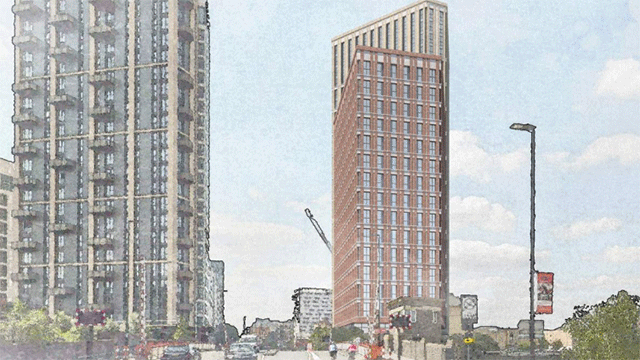Late last year, listed real estate investor GPE took on a sizeable challenge – the company promised to put pound signs on its social impact. The company’s social value framework mapped out how its teams plan to deliver £10m of social value across its estate by 2030 through commitment to various targets. And, crucially, it made clear just how tightly this would be tied to its existing sustainability initiatives.
For Janine Cole, GPE’s sustainability and social impact director, the link between social value and sustainability cannot be ignored when it comes to discussing environmental, social and governance issues in real estate.
“This has been a favourite soapbox of mine for a while – the fact that you can’t do the E [in ESG] unless you do the S,” Cole said on EG’s latest sustainability podcast.
“We know that the people who have the least will be the most impacted by climate change. Real estate has got a great deal of knowledge about decarbonising buildings, so why can’t we use that knowledge to support the communities that we are working in to help them along the journey? We are all looking at how can we make our buildings fossil fuel-free, so how do we support our communities and do the same thing?”
At the table
Cole joined EG’s other guests to discuss climate resilience in the real estate industry and the social impact of sustainability strategies, as well as the opportunities around data and analytics that can help businesses to mitigate risks. Also offering their views were Twinview’s Rob Charlton and Derwent London’s senior sustainability manager Samantha Carlsson.
“For a long time, sustainability, or ESG in all the various forms, almost had to fight to be at the table, whereas now we are at the table and we are part of the key decisions,” said Carlsson. “For me, it’s really exciting. You are still having the discussion along with all the other key things that need to be considered but it is on an equal, if not higher, platform.”
The topic has become crucial quickly, said Charlton. “It has all happened very, very fast. The businesses that are flexible and are willing to innovate and adapt are the ones that are going to get further ahead than maybe their competitors.”
Twinview’s digital twin offering, Charlton said, was not necessary pitched as a sustainability solution when it was first mooted eight years ago. “But over the past two or three years, we have seen a lot of our clients who say, ‘the first thing we need to address is around sustainability’,” he added. “Resilience is the starting point for all of this.”
How does a company such as Derwent London lean on data as it maps out a sustainability path? Carlsson described data as “really important” to the business, noting that “you can’t reduce what you don’t know”. But as the focus shifts to indirect emissions, she added, parties across the industry need to “start working together and sharing lessons” rather than looking at siloed data sets. That way “people who are further along in this journey can help the people who are just starting”.
“We have got our heads around scope one and two [emissions] over the years,” she said. “But scope three really is the challenge now, and it’s about how we can work with our occupiers to try and measure what we don’t know and then reduce that. That goes for operational carbon as well as embodied carbon. Real estate has one of the biggest supply chains, and so it is about how at each stage of that we can get everybody involved in measuring and reducing and monitoring the impacts so we can show that there is a reduction. We can’t just do it ourselves, we need everybody to be working together. Collaboration is definitely a buzzword that’s going around, but it is absolutely key.”
Stay flexible
Cole too acknowledged the need to broaden business horizons and connect more efficiently with companies throughout the real estate supply chain. She highlighted issues such as hidden embodied carbon – steel that has travelled multiple times around the EU to have various treatment applied, for example.
“One of the things that we worked out early on was that we weren’t the ones with all the answers, and it was important for us to engage with our structural engineers, our architects, our services consultants to really get under the skin of it to understand their challenges.”
The answers won’t necessarily come quickly, and EG’s guests emphasised the importance of flexibility. “Everybody’s continually learning,” said Charlton. “We will make mistakes and we will identify things we didn’t think we needed to know. We have a roadmap but we have never stuck to it. Clients are changing things and their priorities are changing.”
Indeed, Cole expects initiatives such as GPE’s social value framework and net zero pathway so be revisited and updated often.
“Sustainability data is in its relative infancy, and so it would be wrong for us to draw the line and go ‘right, that’s how we do it, we’ve got it now, it’s cracked’. It isn’t cracked. And because we are all learning so much, we need to be able to innovate. And we need to get things wrong too, because ultimately, that’s how you learn. There needs to be space for people to say ‘we didn’t quite get that one right, so we are going to rewind and rethink. That’s why it’s so important to stay flexible.”
To send feedback, e-mail tim.burke@eg.co.uk or tweet @_tim_burke or @EGPropertyNews












